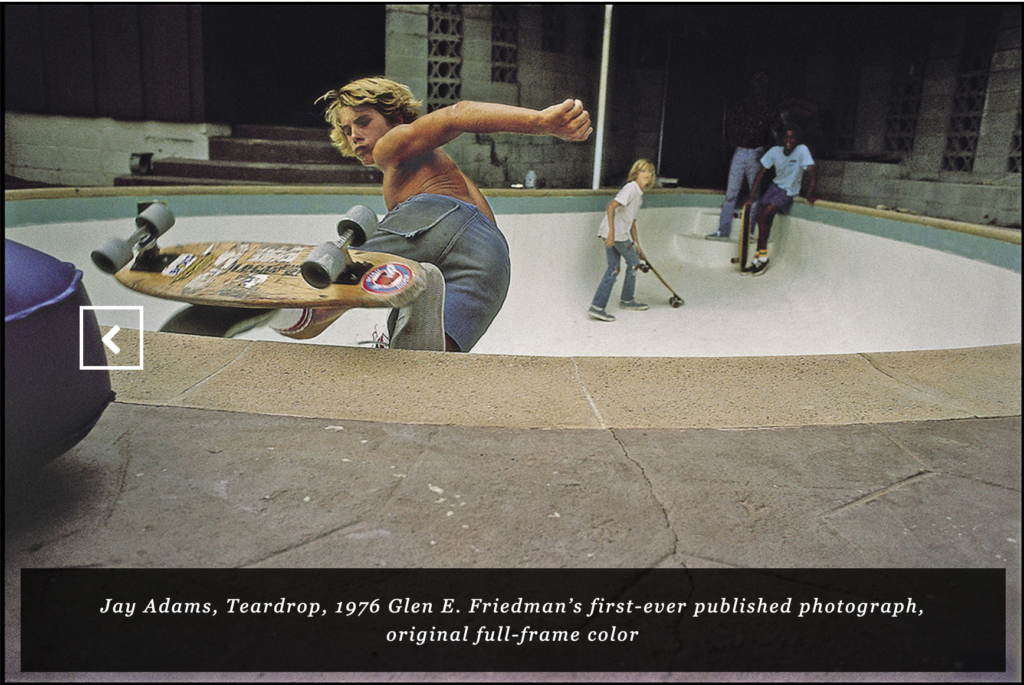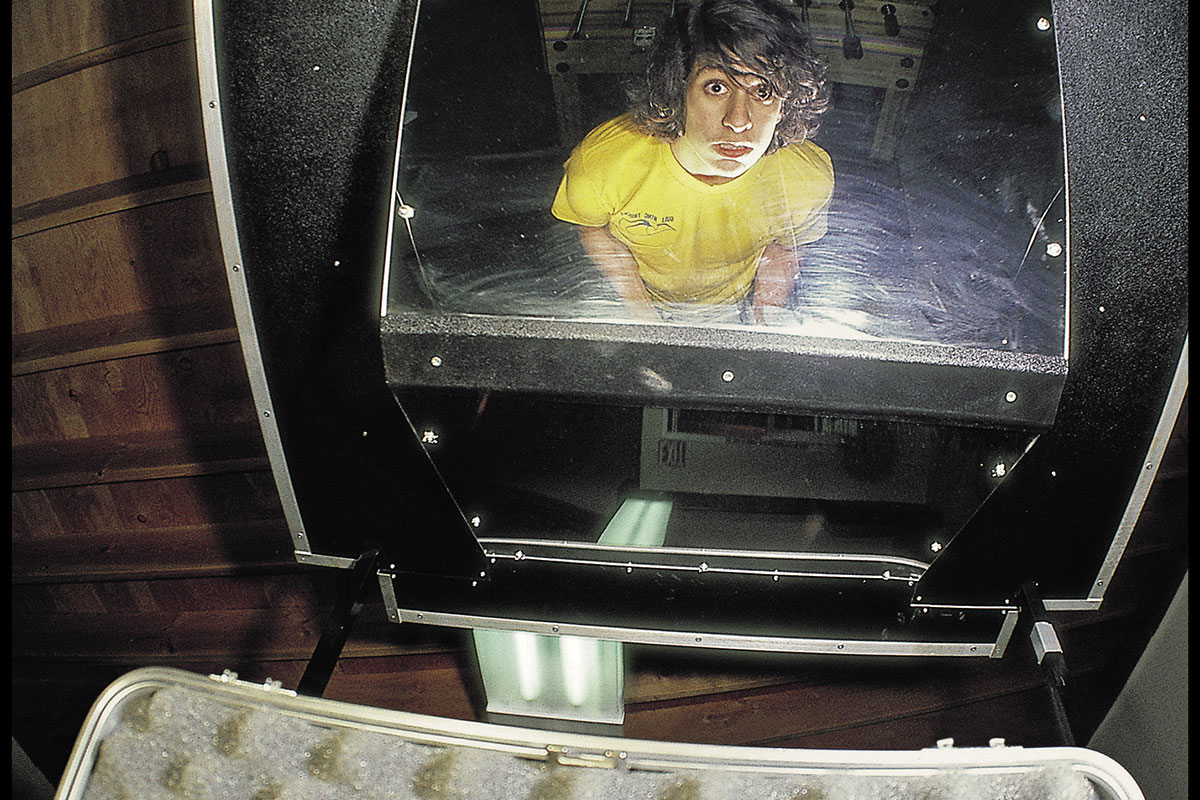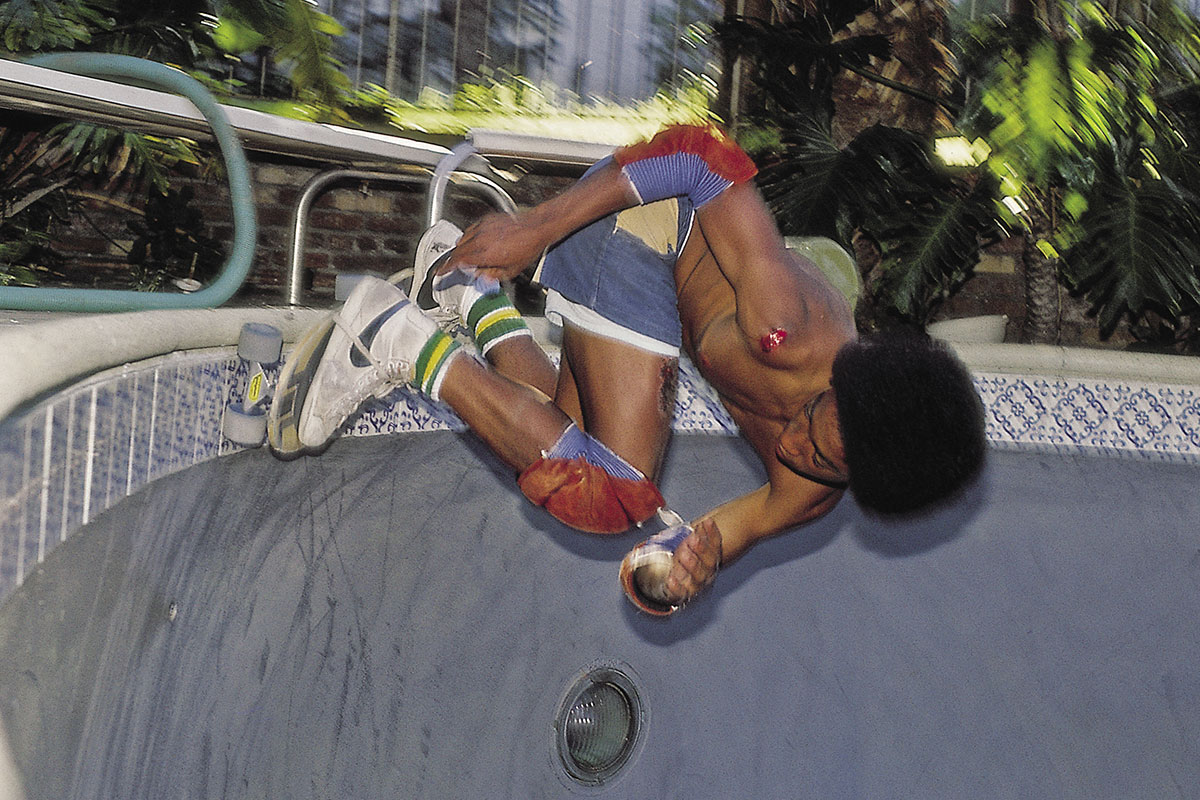The FLOW TRIP
Glen E. Friedman Looks Back at the Dogtown Days
By Whalebone August 20, 2019

An expanded edition of a book of Friedman’s classic photographs offers an up-close-and-personal look at the birth of modern skateboarding
Glen E. Friedman has taken some of the most iconic skateboarding photos you’ve ever seen. And he was something like all of 14 years old when he took many of them. His photos of Tony Alva airing it out over a pool lip in Venice Beach backyard or Jay Adams, tube socks pulled high, grinding through a turn at top speed have taken on an almost mythical air at this point. He pogoed from chronicling the breakout years of the Zephyr Skating Team in Dogtown (Ocean Park, Santa Monica and Venice) to photographing the early days of SoCal punk rock and bands like Black Flag and the Dead Kennedys then went east to capture hip hop’s early years with the Run DMC, The Beastie Boys, Ice-T and Public Enemy. Far from a bystander at these moments, he’s created some of their defining documents.
“I was witnessing something at the time that was truly unbelievable and unfathomable to the outside world.“
It’s been nearly 20 years since the publication of his book “DogTown: The Legend of the Z-Boys” with legendary writer C.R. Stecyk III (which itself was published 20 years or more after many of the photos had been taken) and the book is now getting a greatly expanded re-release (from which the accompanying never-before published photos you see here were taken).
We caught up with Glen to ask about the Dogtown days 40 years on.

Glen E. Friedman, accidental, end of roll, first-ever self-portrait, 16 years old, at Marina del Rey Skatepark arcade, 1978.
Tell us about the first time you shot the Dogtown skateboarders?
I was a skater myself and they were my friends, just the dudes I skated around. One day I just decided it would be cool to make some pictures of them, because I was witnessing something at the time that was truly unbelievable and unfathomable to the outside world, or even outside of West Los Angeles—it was unique and inspiring.
What did you think was wrong with early skate mag photography?
Well Stecyk’s stuff was always mysterious and exciting and inspiring to me, a lot of the rest of it was kind of sterile and did not portray the action the way I perceived it, so that inspired me at 13 years old to make my own photographs.
“A lot of the rest of it was kind of sterile and did not portray the action the way I perceived it.“
What prompted you to think you could do it better? How did you do it differently?
I KNEW what I was seeing was unique, and as I said. The photos I would see in the mags just weren’t showing what I wanted them to in most cases, and after I started making photos and seeing the results and getting feedback from my peers and the older dudes, mostly, I was stoked and had confidence that what I was doing was better. Certainly more interesting to my friends and I.
What was your goal photographing back then?
Just portray and compose the most radical photos, with the most style and closest to the absolute 1/500th of a second peak of the action. Get close, get radical, make it look gnarly and inspire others who could not be there to witness what I was witnessing. And then getting shit published in the mag. The Mag of course being “Skateboarder Magazine” because it was truly the bible of all skaters around the world then, and the other mags were garbage in comparison.

Marty Grimes, Rockingham, 1978.
Your favorite thing to shoot?
Backyard pools, hands down, no question, nothing else close.
What did you learn shooting skateboarding that informed your style shooting punk and music and other things later?
Timing, closeness and intimacy to the subject and composition. Excitement and character are essential. Skateboarding is where I cut my teeth. Things I learned in skateboarding have informed my entire life.
Which skaters stood out and why?
Lots… Tony [Alva] No. 1, Jay [Adams], Stacy, Shogo, DP [Duane Peters], Bobby Piercy, PC [Paul Constantineau], Wentzle [Ruml], Lance [Mountain], Hawk…
Alva just always stood out above everyone in attitude, confidence and aggressive style, and also an ability to empathize with others’ plights (when not competing). He, and most on this list, could be very insightful based upon all they learned from having so much light shine on them and experiences they accumulated from being the originators they were.
Jay was as radical and spontaneous as they get and always made shit look good. His intuition in skating was like few others, and he had a vision that was always spot-on, believe it or not. Jay could be one of the rudest and most fucked up people around but he could also be one of the nicest and most thoughtful, it just depended on what day you caught him.
“Jay could be one of the rudest and most fucked up people around but he could also be one of the nicest and most thoughtful.“

